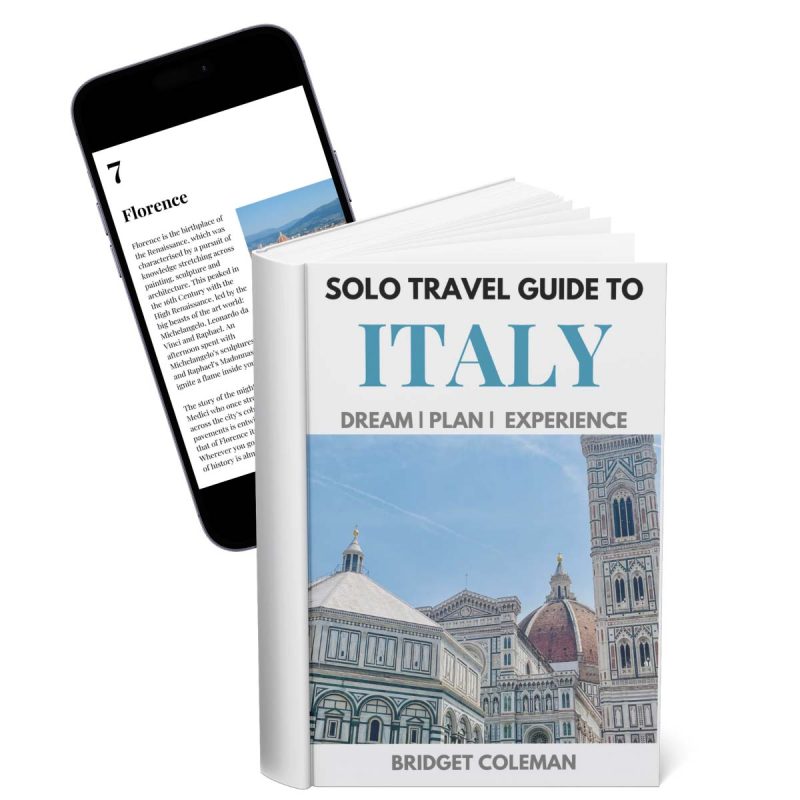As a Renaissance fangirl, visiting the Carrara marble quarries was a must. But I didn’t anticipate how spectacular these marble mountains in Italy’s Apuan Alps would be.
They are an extraordinary sight. Although you would be forgiven for thinking they are snow-capped peaks, their quarried faces glisten with marble.
To learn more about one of Italy’s most iconic exports, here’s how I visited the fascinating and spectacularly scenic Carrara marble mines.

I’VE WRITTEN THIS ITALY SOLO TRAVEL GUIDE!
A 100+ page ebook to inspire and equip solo travellers with the confidence and knowledge to explore Italy independently
- Plan Your Trip – with curated itineraries, budgeting and how to get around
- Explore Awesome Destinations – guides to the must-see cities of Rome, Florence, Venice and Naples
- Stay Safe as a Solo Traveller – practical safety advice, empowering you to confidently navigate Italy and avoid common pitfalls
- Enjoy Eating Out in Italy – essential tried-and-tested solo dining tips
Why Carrara Marble is So Special
Carrara marble is famed for its high quality and beauty. It has been quarried since Ancient Roman times and was then called the “Luna marble.”
The deposits were next to the sea which was ideal for transportation. In those days the marble was rolled down the mountain by hand.
This was the Renaissance’s raw material and was the starting point for many of Florence’s finest sculptures. It can be seen in cathedrals, sculptures and monuments, from the sublime cathedral in Orvieto to the Pantheon, one of Rome’s most famous landmarks.
Michelangelo made many trips to Carrara to select pieces of the stone for his works, including David in Florence and the Pieta in St. Peter’s Basilica in Rome. It is said that David was inspired by the brawny Carrara masons.
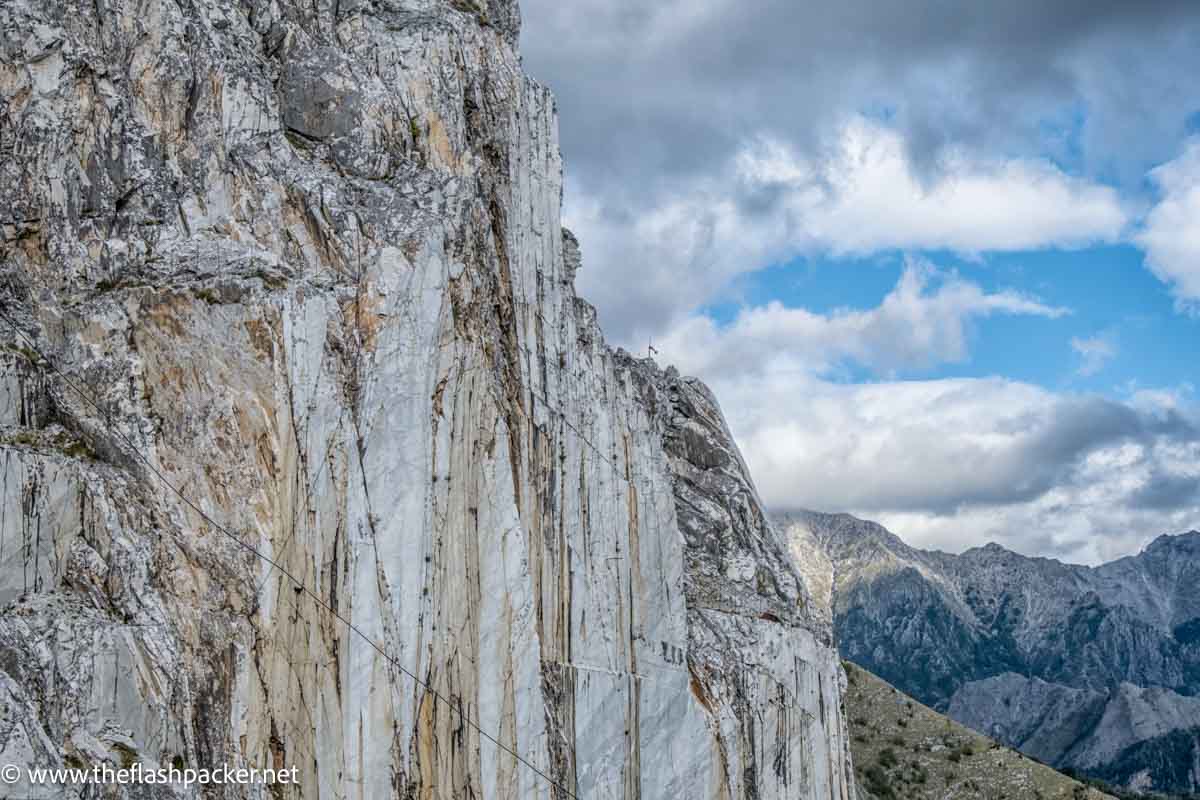
White Carrara marble is prized because of its purity (it is 98-99% calcium carbonate). Due to its softness, it is the ideal raw material for sculpting.
Carrara blue-grey marble is harder and has more impurities, namely carbon, clay and iron. This makes it good for building.
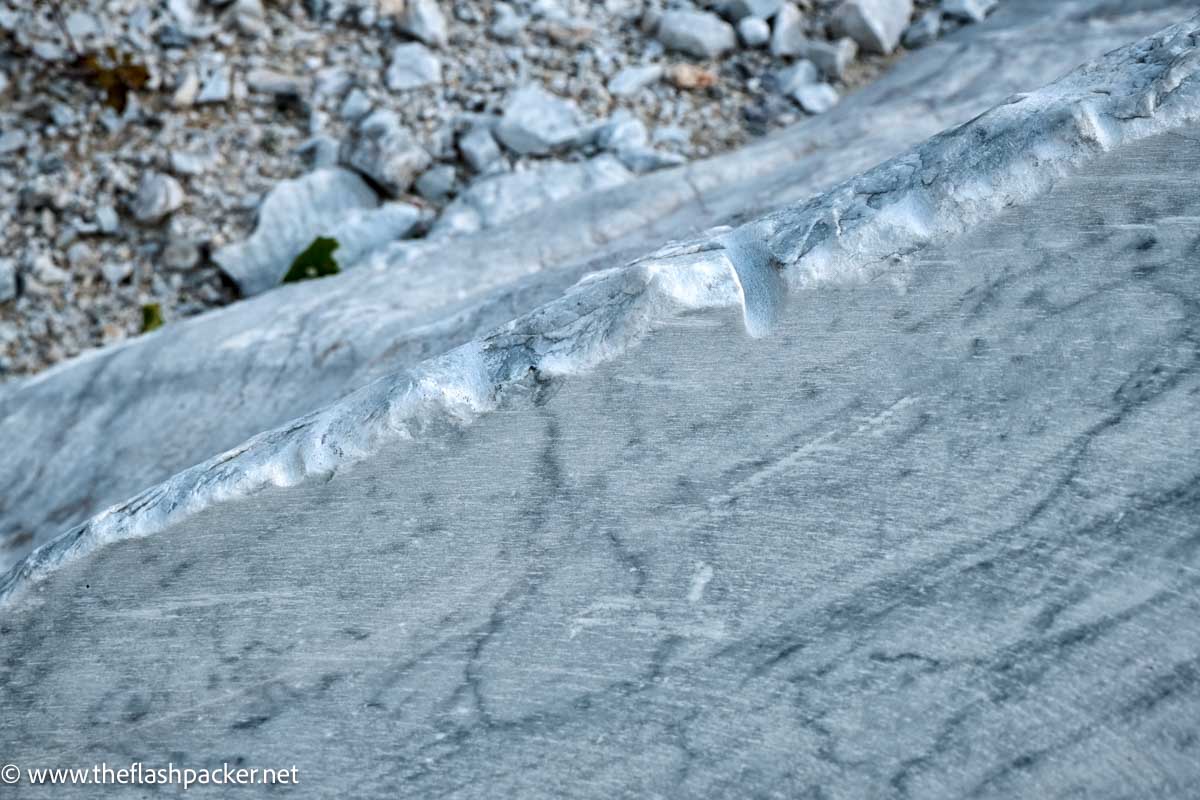
How to Visit the Carrara Marble Quarries
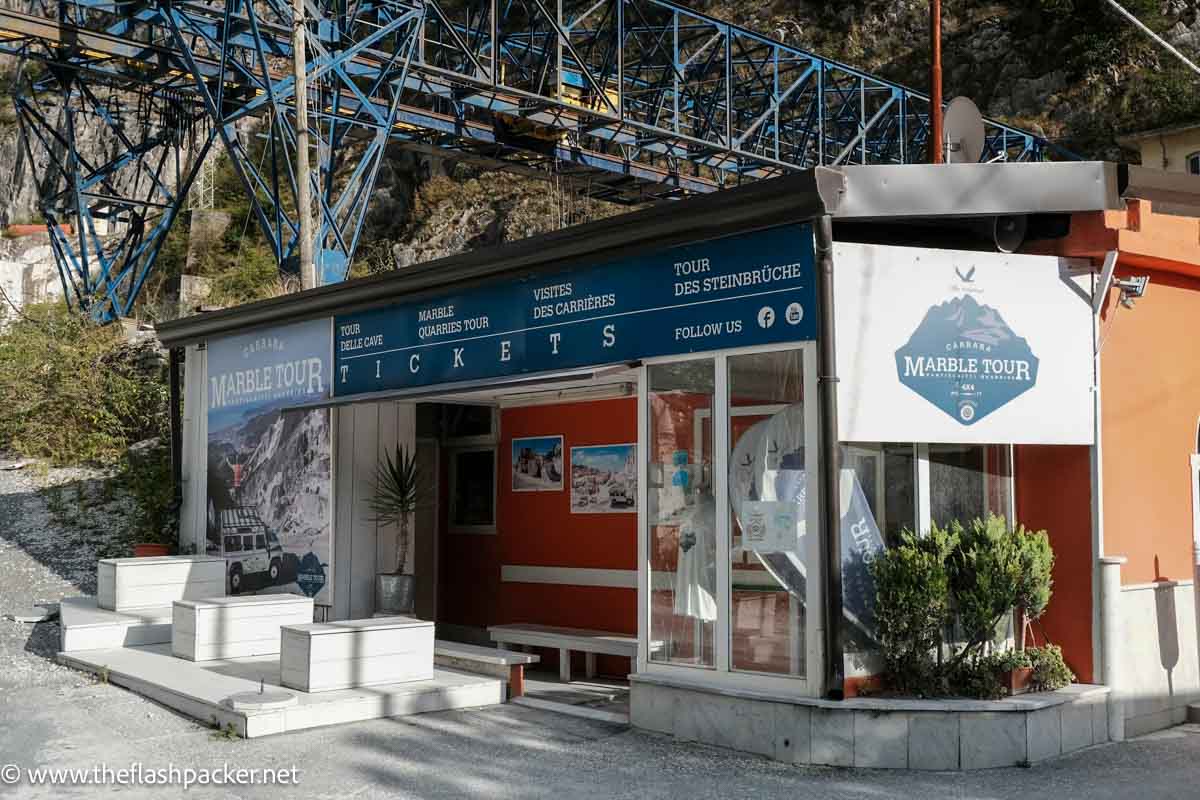
Carrara Marble Tour offers a 50/60-minute excursion from March to November. In 2025, it costs 15 euros per person.
Tours are in Italian or English. You don’t need to book in advance unless you are part of a group of at least 20 people.
There is also a small museum, gift shop, restaurant and toilet facilities. In summer, there are mini-bus tours inside the mines.
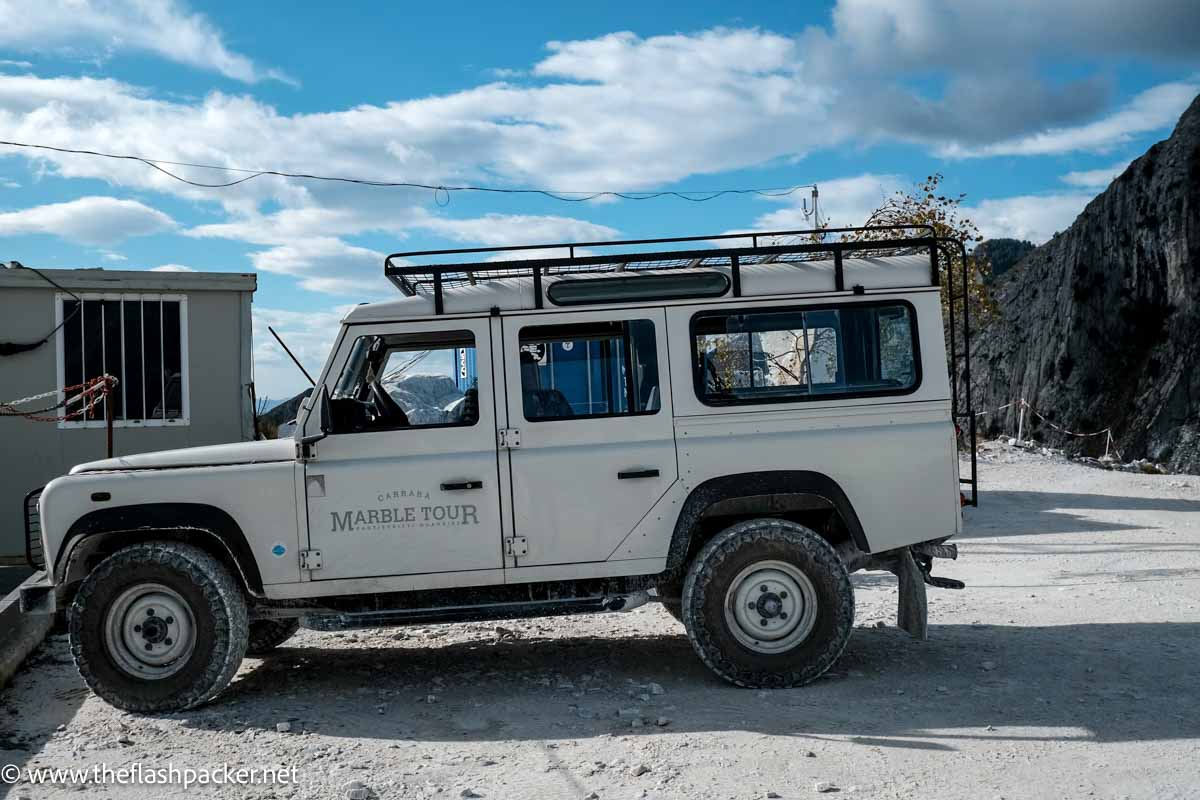
Although it is possible to visit some of the Carrara mine areas and the museum under your own steam, I recommend taking the tour. The views alone warrant the modest cost and you get to see the quarries close-up.
My Experience of the Carrara Quarry Tour
I visited the Carrara marble quarry as a shore excursion from Livorno, a popular port of call on cruises of the Western Mediterranean. This experience included a return transfer from the port and the tour of the marble quarries by Carrara Marble Tour.
Staring at the parking lot at Fantiscritti, our guide and driver Pipo bundled us into a 4×4 and negotiated his way along a steep marble road to quarry n.83 Canalgrande Alto, one thousand metres above sea level.
The views from here over the Apuan-Versilian coastline and the Ligurian Sea were sensational.
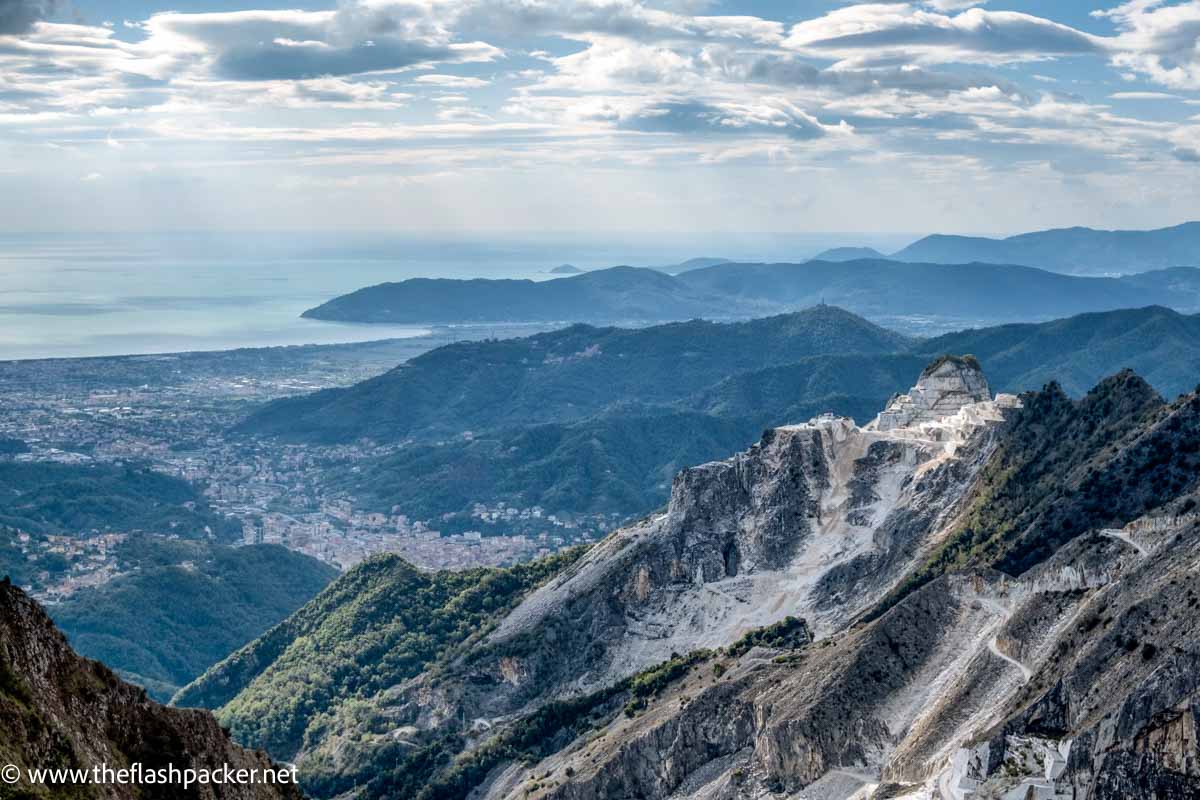
The quarrying industry in Carrara directly employs about 1000 workers. Quarrymen are just that; the labour force is almost 100% male and working here is a tradition passed down through generations of local people.
There is a solitary female; the site’s Health & Safety manager. It takes a woman to keep this many men under control!
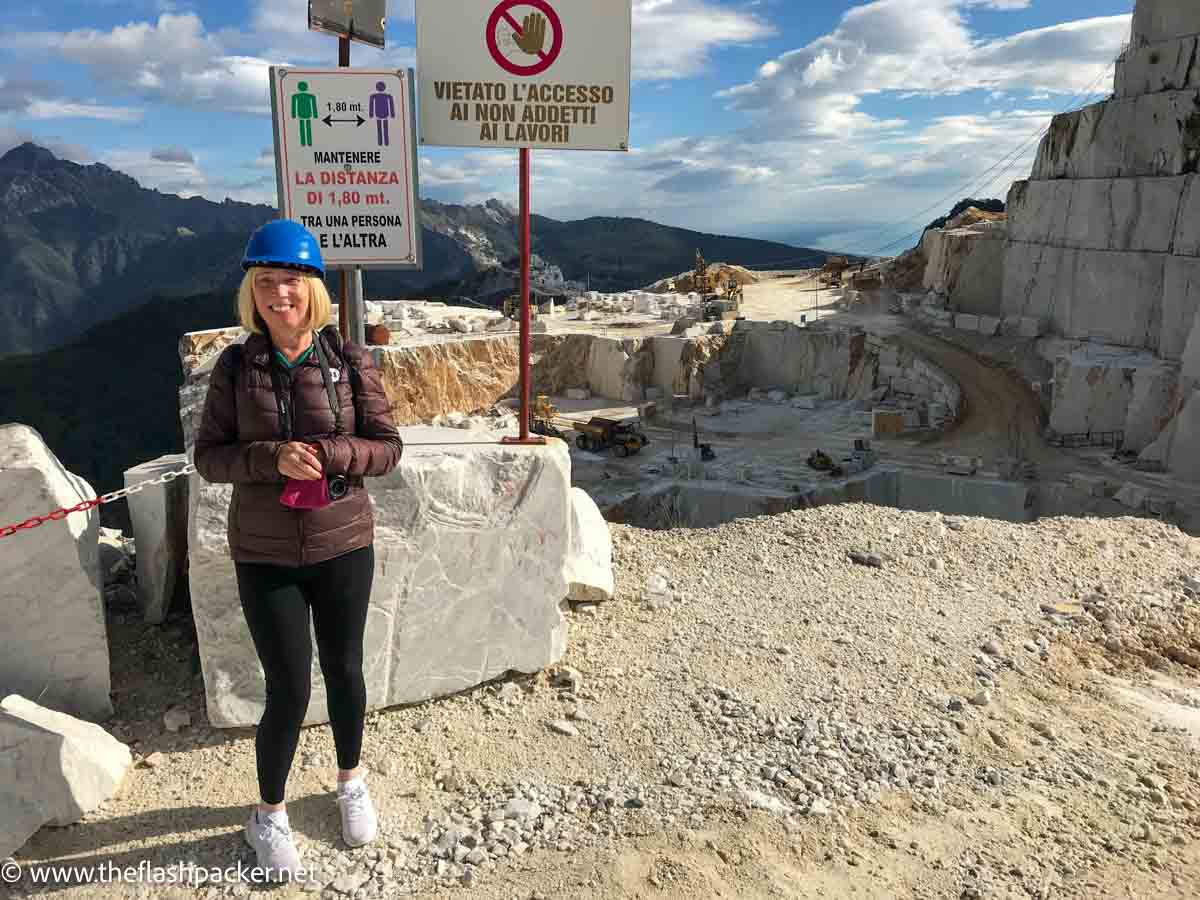
Marble is quarried at Carrara year-round, stopping only when heavy rain makes conditions on the access road dangerous.
This can be a hazardous occupation. Pipo told us that 14 people had died in the previous ten years. On a more positive note, the mine’s safety record is improving.
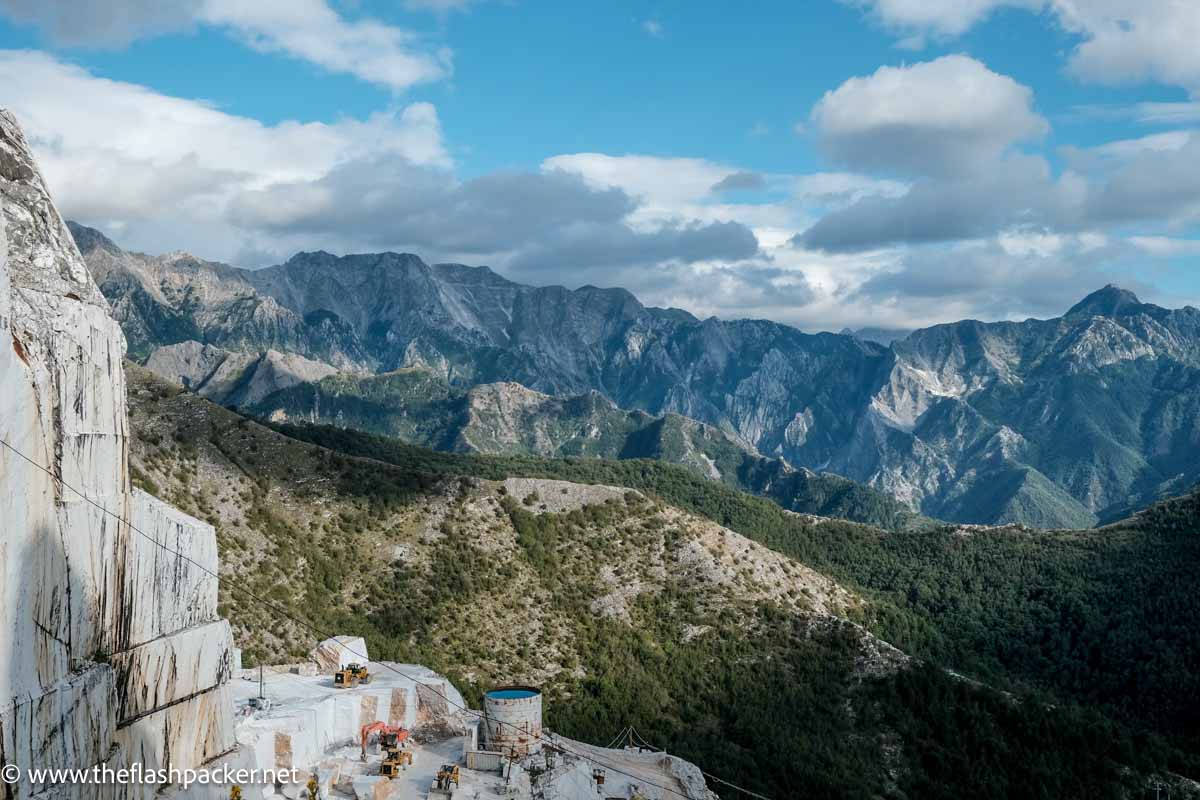
In the distance, we could see the quarrymen hard at work.
A large block of marble, a bancata, is cut from the ground and then split into smaller blocks with diamond chains. But small is a relative term as these blocks weigh in at 20 tonnes. The blocks are then taken to the harbour of Carrara for shipping to China where they are cut and processed.
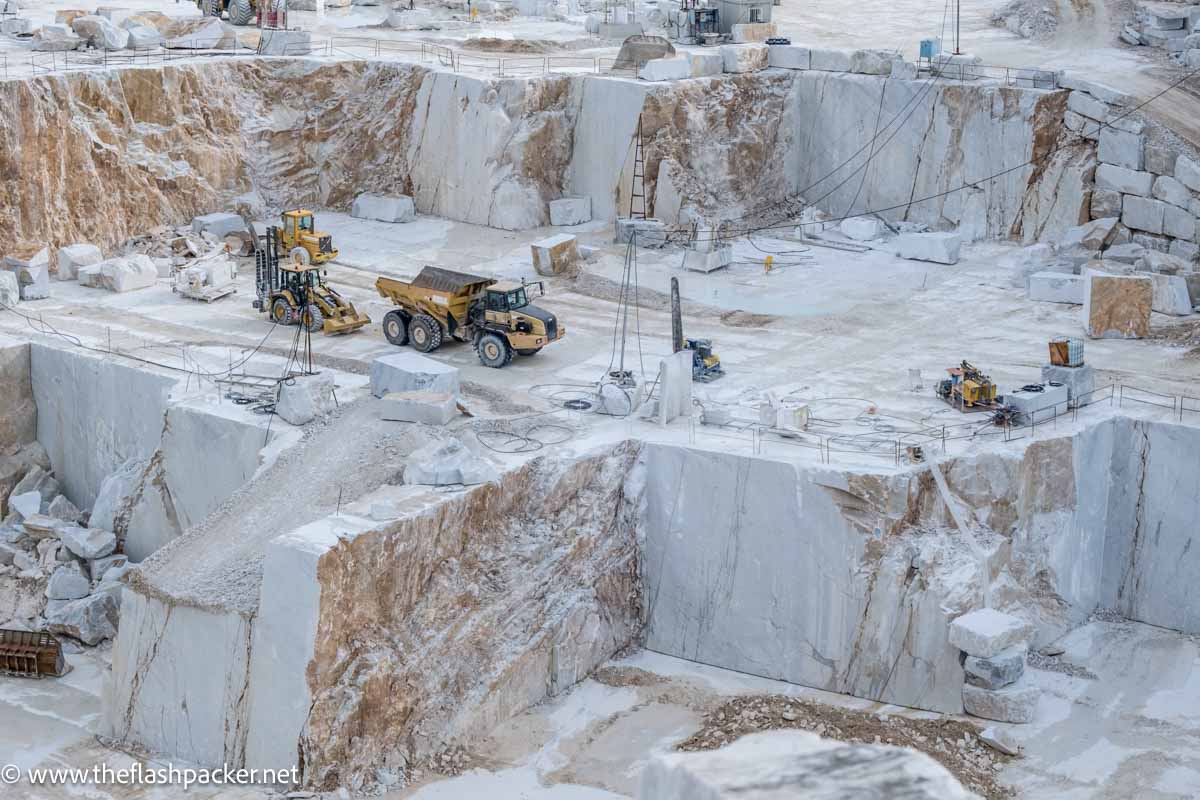
Quarrying marble is hard work and the men need sustenance. The typical meal of local miners is lardo di Colonnata I.G.P., a herb-infused backfat that is left to age in white marble vats in the nearby village of Colonnata.
At the end of the tour, we were served a quarryman’s breakfast of thinly sliced lardo, washed down with a glass of red wine. It wouldn’t be my first choice of lunch, but when in Carrara …
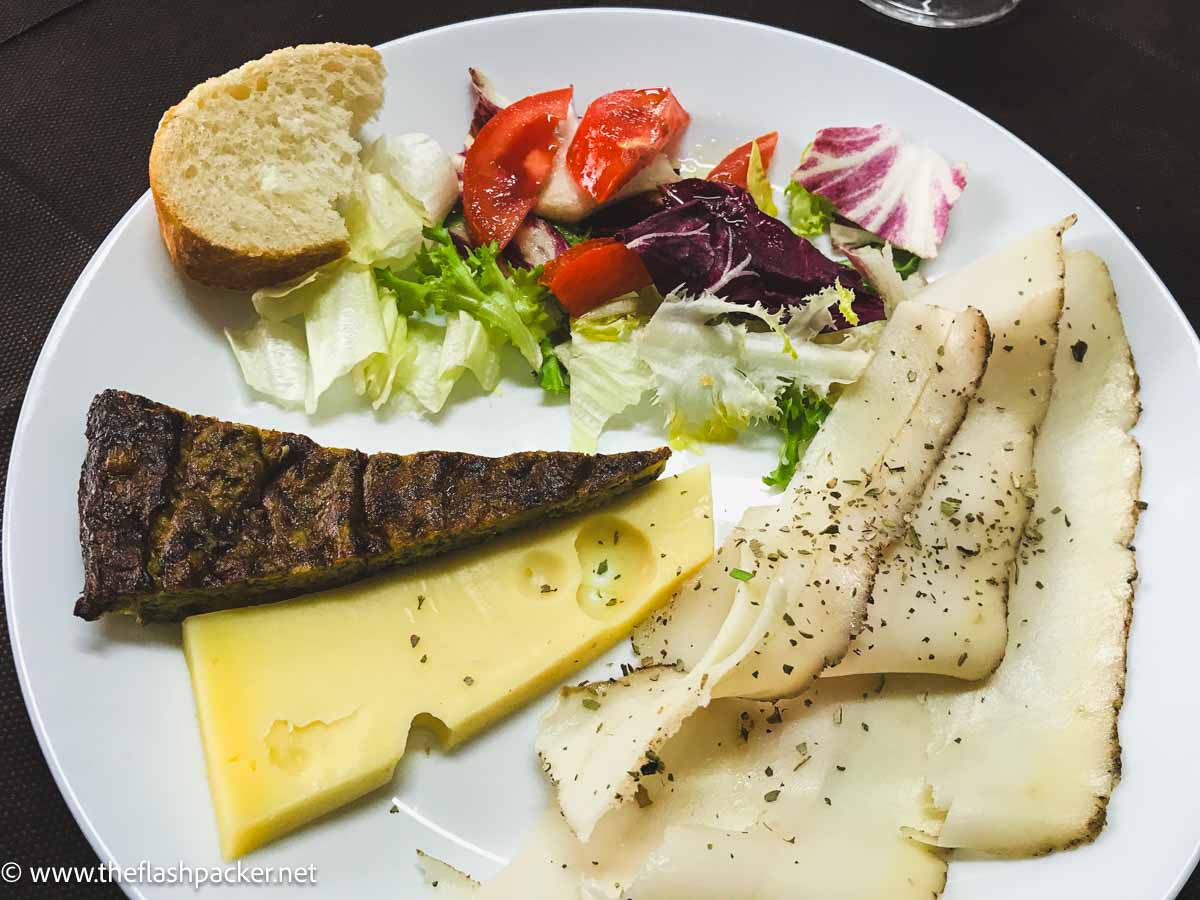
If the Carrara quarries look familiar, that may be because they were featured in the opening car chase of the 2008 James Bond Quantum of Solace blockbuster (one of my favourite movies filmed in Italy).
I had one burning question at the end of the quarry tour; will the Carrara mines run out of marble?
With limitations on mining, it is thought that there will be Carrara marble for the next 400 – 600 years. Without these restrictions, Carrara may run out of marble within 200 years.
How to Get There
The Carrara marble quarries are in Tuscany, around four miles northeast of the city of Carrara at the foot of the Apuan Alps.
By car, Carrara is an hour north of Pisa or a 90-minute drive south of Genoa. To get to the starting point of the tour from Carrara, follow signs for Cave and then Fantiscritti.
If you don’t have a car, the nearest railway station is Carrara-Avenza on the Genoa-Pisa branch line.
PS. If you’ve found this Carrara Marble Quarries guide helpful, Pin it to read later!
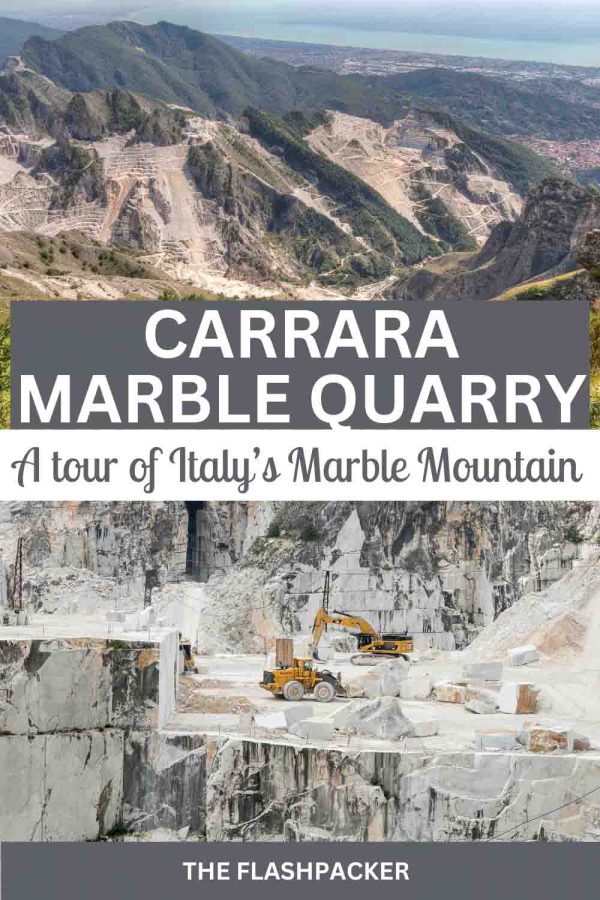
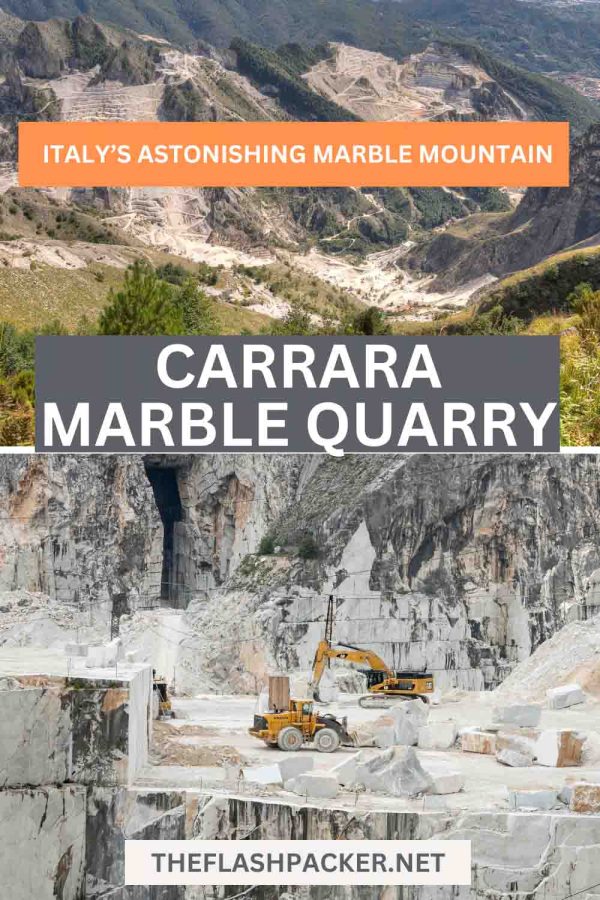

About Bridget
Bridget Coleman has been a passionate traveller for more than 30 years. She has visited 70+ countries, most as a solo traveller.
Articles on this site reflect her first-hand experiences.
To get in touch, email her at hello@theflashpacker.net or follow her on social media.

